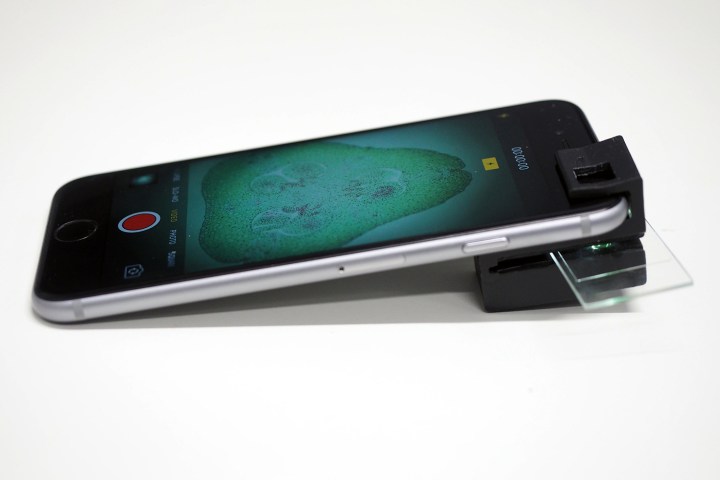Over the past few years, citizen scientists have helped illuminate our universe. From mapping refugee camps to cataloging nearby stars, these amateurs often work after hours and without pay, making access to data and the affordability of tools key to their success.
Now a new smartphone microscope might help make science even more accessible for professionals and amateurs alike. Developed by researchers from the ARC Center of Excellence for Nanoscale BioPhotonics (CNBP) and the Royal Melbourne Institute of Technology (RMIT) University in Australia, the 3D-printable device can be attached to most smartphones to turn it into a fully functional microscope, strong enough to visualize specimens as small as a two-hundredth of a millimeter. That means it can be used to view microscopic organisms and blood cells, making it potentially useful for testing water cleanliness and analyzing blood samples.
The 3D printing files are free to download.
“There’s a lot of great work out there by scientists who have adapted mobile phones into microscopes for use in medical diagnostics in areas where it might be impractical to bring a normal, heavy, expensive microscope,” Antony Orth, the RMIT researcher who led the development of the microscope, told Digital Trends. “Most of these devices are amazingly engineered, but they are more complicated than you’d think. There are lots of little parts you need to make it work, and assembling everything can be a bit daunting if you don’t have access to a lab. We wanted to go in the other direction, to see what was the simplest microscope we could make.”
Since most smartphone microscopes rely on an externally powered light source, Orth and his team tried to find a light source within the phone itself. The camera flash was the obvious choice but posed its own problems, since it would illuminate the sample from the wrong side.
“The challenge is that the flash is facing the wrong way,” he said. “It’s meant to illuminate whatever is in front of you. For microscopy, we actually want it to shine directly through our microscopic sample and into the camera. So we need to turn light around to illuminate the sample.”
Orth and his colleagues realized that the smartphone camera flashes generate a lot of light, making them strong enough to take a detour through a tunnel in the 3D-printed device, and end illuminating the sample from behind. It was a simple solution that lets the microscope work without a mirror.
Moving forward, the researchers want to expand the capabilities of their device, which can already be used to visualize samples with light and dark backgrounds. Orth advised us to stay tuned, saying, “We have some tricks up our sleeves that we think can enable us to see 3D structures, as well as improved resolution.”
A paper detailing the microscope’s development was published this week in the journal Science Reports.



